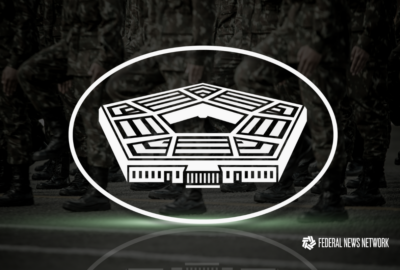This content is sponsored by ThunderCat Technology.
As agencies move to the cloud in record numbers, they may be overlooking an “easy button” that will allow them to migrate workloads from on-premise environments into the cloud with the same tooling, engineering staff and resources. And the best part is most of them are already very familiar with the interface, meaning they can leverage existing skillsets to accomplish it.
That “easy button” is VMware Cloud (VMC), a jointly engineered service that brings VMware’s enterprise class Software-Defined Data Center SDDC software to the Amazon Web Services Cloud, with optimized access to AWS services as well as robust disaster protection. With the same architecture and operational experience on-premises and in the cloud, IT teams can now quickly derive instant business value from use of the AWS and VMware hybrid cloud experience.
“Customers have been using VMware for decades; it just works,” said David Lim, AWS Worldwide Public Sector head of VMware Cloud for Asia Pacific and Japan. “VMware Cloud on AWS provides public sector IT teams an on-demand, scalable hybrid cloud service that enables them to seamlessly extend, migrate and protect their infrastructure in the cloud. This scalable service enables IT teams to seamlessly extend, migrate, protect and manage their cloud-based resources with familiar VMware tools. With the same architecture and operational experience on-premises and in the cloud, US public sector IT teams can quickly derive instant business value through the AWS and VMware hybrid cloud experience.”
VMC is a managed service, which is a bit of a departure for VMware, which until now sold software as a license and let agencies install and operate it. That means there’s no hardware to install, no infrastructure to procure. It’s essentially a software-defined data center.
“It takes about two hours to get that fully built out, within 15 minutes of that operation, you’re actually up and running and moving workloads into VMC, just as you would as if you had your own physical data center,” said Nic Perez, chief technology officer for Cloud at ThunderCat. “So again, it’s a managed service, which is obviously quite a departure, but it’s quite refreshing. And that’s what customers want. They don’t want to be buying gear and building out their data centers any bigger anymore with power and anymore footprint. They want to actually somewhat be modernizing their data centers, reducing that particular footprint and focusing on what the business that they have, focusing on their strengths and not maintaining hardware and giving them Game of Thrones and Simpson nicknames anymore.”
And ThunderCat is one of the easiest way to get this up and running. They’re certified by both VMware and AWS to help agencies build a strategy for data center modernization and move their workloads. They host immersion days, which can get agency staff hands-on with VMC.
The main use cases for VMC that Lim said he sees are cloud migration, data center modernization, disaster recovery, and next-generation applications. Cloud migration has seen massive interest due to COVID, as agencies have needed to keep their business functions up and running for remote workers, using virtual desktop infrastructures and additional environments.
Likewise, disaster recovery has seen increased interest recently, both for natural disasters and cybersecurity risks. VMC can help agencies mirror their production environments perfectly, without the cost tradeoff usually associated with building out the necessary infrastructure and then just having it sit, waiting for disaster to strike. When the National Institutes of Health had to shut down 29 of its buildings due to a storm, Perez helped them design a disaster recovery plan to migrate all their applications and experiments to the cloud with full production capacity in the event of another building shutdown.
And agencies that want to get into artificial intelligence, machine learning, internet of things and other similar next-generation applications can leverage a virtual private cloud and a 25 gigabit elastic network interface that links it to AWS and VMC.
“So customers now have a seamless elastic network interface between the services. This means there is little to no latency and no data egress charges,” Lim said. “So if customers do leverage AWS services, and then move out back into the VMware cloud environment, they won’t be charged. This is a huge enabler for customers who are looking to move legacy applications into AWS and start to leverage AWS services. This really drives a lot of innovation as well. Customers can experiment around how to become cloud enabled at their own time and they can iterate in their own time.”
And because they’re already largely familiar with the base technology, VMware, doing so has never been easier.
“Federal civilian and defense agencies depend on VMware technology for their virtualization stack, their enterprise grade software, and now they’re depending on AWS for their cloud software stack,” Perez said. “They want to maximize those investments in people, the process and the technology. Ideally, the holy grail is to do so in a cost effective manner. So VMware cloud on AWS enables the infrastructure and operations teams to have the choice of which workloads move to the cloud. And now VMware is enabling that capability on the best-of-breed cloud provider, AWS, so that they can actually utilize all of that experience and investment.”
Copyright
© 2024 Federal News Network. All rights reserved. This website is not intended for users located within the European Economic Area.

